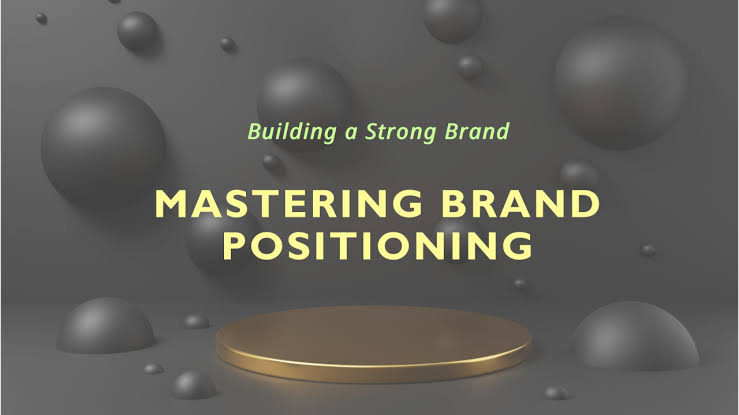Building a strong brand is more than just designing a catchy logo or choosing a memorable name — it’s a strategic, science-backed process that involves psychology, storytelling, consistency, and emotional resonance. In today’s hyper-competitive and digitally driven landscape, especially as of 2025, a well-developed brand is not a luxury. It’s a necessity.
The strongest brands in the world — whether Nike, Apple, or personal brands like Elon Musk — all have one thing in common: they connect deeply with their audience. They go beyond products or services and create an identity that people trust, believe in, and advocate for. Behind this emotional pull is a calculated, data-informed science that anyone can learn and apply.
Understanding What a Brand Truly Is
A brand is not just a logo or a product. It’s the entire perception people have about you or your business. It includes your values, personality, voice, visuals, reputation, and the emotional impact you leave behind. In essence, a brand is how people feel when they hear your name or interact with your work.
Your brand is your promise — the experience and value people can expect every time they come across your presence. When done right, this leads to loyalty, trust, and lasting relevance.
The Psychology Behind Brand Loyalty
Branding taps into human psychology. Our brains are wired to trust familiarity and form emotional attachments. Here are some of the psychological principles behind a strong brand:
- Consistency breeds trust: When your messaging, visuals, and tone are consistent across all touchpoints, people begin to recognize and rely on you.
- Emotional connections matter: People make purchasing decisions based on feelings, not logic. A brand that evokes positive emotions wins loyalty.
- Social proof influences perception: Testimonials, reviews, and influencer endorsements create credibility and reduce uncertainty.
- Cognitive ease builds recognition: Simple, clear, and repetitive branding helps people remember and choose you over others.
A brand that understands how to influence emotion and memory has a powerful advantage in the marketplace.
The Core Elements of a Strong Brand
To build a brand with substance and staying power, you must define and unify its essential components. These include:
1. Brand Identity
This is the visual and verbal representation of your brand. It includes:
- Logo
- Color palette
- Typography
- Imagery style
- Tagline or slogan
- Tone of voice
Your brand identity should reflect your core values and be instantly recognizable.
2. Brand Purpose and Mission
What do you stand for? Why do you exist beyond making a profit? Consumers today want to support brands that align with their values.
- Define your “why” clearly
- Communicate it through storytelling and action
- Let your mission shape decisions, partnerships, and content
A meaningful mission fosters brand love and inspires communities.
3. Brand Positioning
This is how your brand fits in the market and how it stands out from competitors. Strong positioning answers:
- Who are we targeting?
- What specific problem do we solve?
- What makes us different or better?
A clear niche gives your brand focus and authority.
4. Brand Personality
Your brand should feel like a person — with a specific attitude, style, and way of speaking. Is it playful or professional? Bold or humble? Sophisticated or approachable?
A well-defined personality:
- Makes your brand relatable
- Guides your messaging tone
- Attracts the right audience
It helps consumers feel like they “know” you, even before buying anything.
Data-Driven Brand Strategy
In 2025, brand development is increasingly informed by data. Thanks to analytics tools and AI insights, you can understand:
- What your audience wants and values
- Which messages or visuals perform best
- Where your customers are most engaged
- How brand perception evolves over time
Data allows brands to refine their strategy in real-time, improving both reach and resonance. Smart brands use A/B testing, user surveys, and social listening to fine-tune their voice and stay relevant.
Storytelling: The Heart of Memorable Branding
Humans have been telling stories for thousands of years — and in branding, storytelling remains one of the most powerful tools available. A good brand story:
- Creates emotional connection
- Demonstrates your values in action
- Makes you memorable and relatable
- Helps people see themselves in your journey
For example, rather than saying “we sell eco-friendly water bottles,” a brand might tell the story of how the founder witnessed ocean pollution and decided to take action.
Stories inspire belief. And belief drives loyalty.
Building Brand Equity Over Time
Brand equity is the long-term value of your brand in the minds of consumers. It’s built slowly, through repeated positive experiences. Here’s how to strengthen it:
- Deliver consistent quality and service
- Listen and respond to customer feedback
- Reward loyal customers
- Innovate while staying true to your core values
- Protect your reputation online and offline
Brands with high equity enjoy more customer trust, less price sensitivity, and greater advocacy.
Personal Branding in the Digital Era
In 2025, individuals are also brands. Entrepreneurs, content creators, job seekers, and professionals all benefit from cultivating a personal brand.
To build yours:
- Identify your unique strengths and voice
- Share valuable insights or stories consistently
- Use social media and platforms like LinkedIn or Substack
- Be authentic — people connect with realness more than perfection
Personal branding helps you stand out, build a network, and open up unexpected opportunities.
Common Mistakes to Avoid
While building a brand, be careful to avoid these pitfalls:
- Lack of clarity: If your audience is confused about who you are or what you offer, they’ll lose interest quickly.
- Inconsistency: Switching up your tone, visuals, or message too often weakens your impact.
- Ignoring feedback: Brands that don’t listen or evolve with their audience become irrelevant.
- Copying others: Inspiration is fine, but imitation dilutes your uniqueness. Authenticity wins.
Conclusion
The science of building a strong brand combines creativity with psychology, strategy, and consistency. It’s a long-term investment that pays off in customer trust, recognition, and growth. Whether you’re shaping a business brand or a personal one, the principles remain the same: know who you are, who you’re serving, and how to connect meaningfully.
In the world of 2025, where attention spans are short and choices are endless, a powerful brand is your greatest asset. It’s not just how the world sees you — it’s how they remember you.



